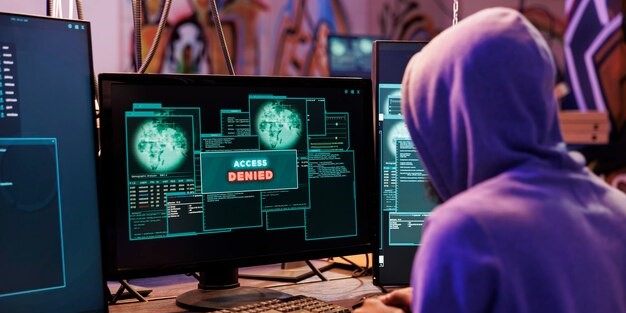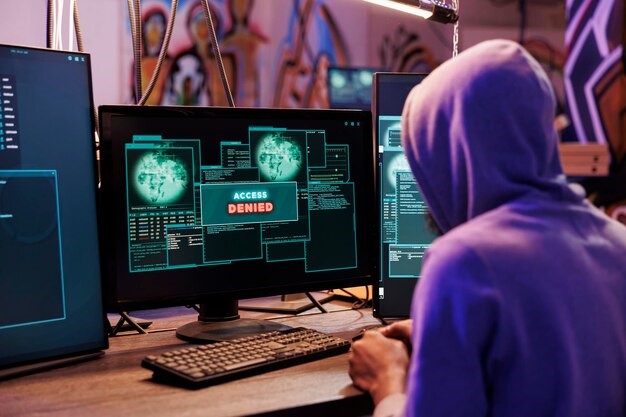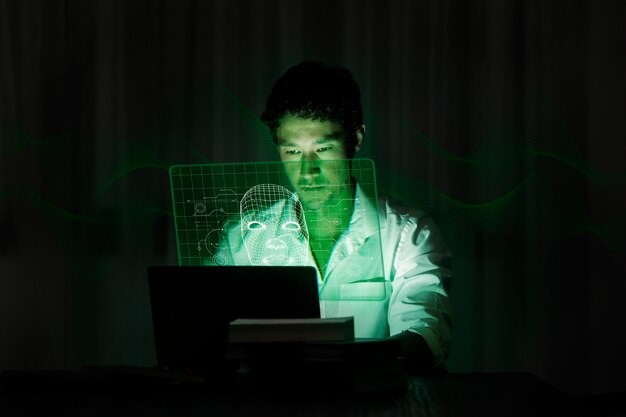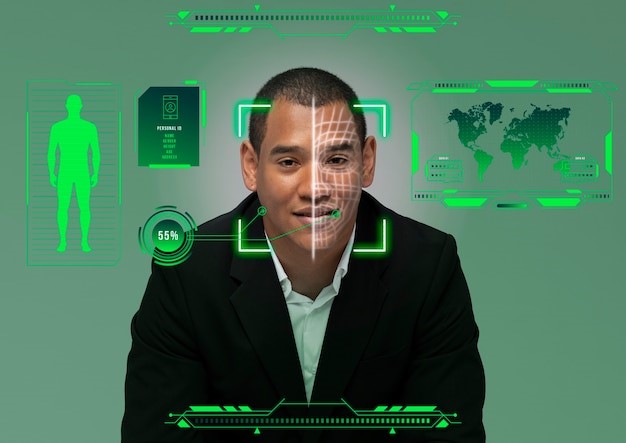
iBeta Quality Assurance acts as a testing lab for biometric technology companies, offering different kinds of tests for software used in various fields. It has become a preferred partner for businesses seeking strong testing solutions.
Others might have questions about the methods for iBeta's biometrics testing. Now, this article can provide a thorough understanding of iBeta testing by explaining the testing approaches and procedure to you.
iBeta, with its biometrics testing, examines the precision and dependability of different biometric systems such as fingerprint identification, face recognition, iris scan, and more.
Following the ISO/IEC 30107-3 standard, iBeta does the biometrics Presentation Attack Detection (PAD) testing that evaluates an application's ability to detect imposters attempting to access a biometric security system.
Being an NVLAP-accredited laboratory, iBeta has its particular test methods and report forms audited and accepted by the NIST administration.
Preceding the testing, PAD subsystem test, data capture test and full system test all determine the PAD mechanism.
The PAD subsystem test checks presentation attack detection. Data capture test verifies coupled presentation attack and quality checks. Full system test examines the biometric comparison abilities of complete biometric subsystem.

Biometric data is gathered directly from a person online or via hacked systems.
This type of attack can use a printed photo, an image, or video on a tablet showing the person's face, and even present their face through a 3D mask or fake silicone fingerprint. An example of a biometric spoof that is detected when it gets shown to the biometric sensor, this kind of attack is known as Presentation Attack Detection (PAD).
In biometrics, PAD is called liveness or liveness detection.
The particular identification if a sensor is looking at a live biometric - not just any recording, image, or other non-living spoof - we call this liveness. So, liveness detection falls under the possible attacks that could be found through PAD.
iBeta makes a choice of six types of attacks, which we term "PAIS," to be as uniform as possible. These attacks have the aim to imitate various kinds of presentation-based attacks that a potential impostor could try on, for example using pictures, movies, or even any physical item to fool the biometric system.
To keep uniformity, iBeta arranges a boundary for the cost of items utilized in the assessments. Level 1 pieces cannot go beyond 30 and Level 2 are limited to 300.
The time limit for creating and applying each species set of artefacts to the PAD is as follows:
For Level 1, iBeta will create and apply every species artefact within 8 hours. They aim to present 150 attacks alternated with 50 genuine presentations.
When a full system is under evaluation, the artefacts associated with the species for a single genuine subject are created and applied within 8 hours. With 6 subjects and 6 species, the testing time needs 48 hours in this case.
iBeta's cooperative subjects are volunteers who offer their biometric characteristics willingly. It helps in evaluating the vendor solution, instead of focusing on testers' ability to acquire latent prints or other kinds of biometric data.
Before applying any presentation attack, iBeta makes a note of the configuration from the vendor solution and refers version in the confirmation letter. The precise device setup is kept a record because the result may be affected by the device used for capturing the biometric samples.
In the test, genuine biometric presentations to the PAD device can create reporting metrics that are needed by ISO 30107-3. They also show if data subjects find it usable.
A high Bona Fide Presentation Classification Error Rate (BPCER) or False Non-Match Rate (FNMR) would bias the test result. iBeta sets a limit of 15% for the BPCER and FNMR to get "PASS" rating. If a genuine data subject is not recognized as live and/or matching with the enrolment reference, testing stops.
The iBeta testing and reporting show if the solution tested is compliant or in line with ISO 30107-3 and reporting requirements.

iBeta's testing confirms the authenticity of biometric systems, like fingerprint recognition and facial recognition. This is very important to keep the genuineness of biometric data and make certain that these systems will offer consistent outcomes.
iBeta has gained a deep understanding of assessing the performance, precision, and dependability of biometric systems. This promotes progress within biometric technologies while boosting security for applications.
During the test, software applications should fulfill the industry standards and regulatory demands. This aids in allowing clients to be proud of their product's security and quality.
Biometrics, security systems, and fraud detection all rely on passive liveness detection. It boosts the safety, dependability, and credibility of different applications by examining small signs and features to define the liveliness of biometric samples.
In AI systems, PAD is an important part of AI systems. This applies especially to biometrics where it helps improve the security, dependability and trustworthiness of the system.
PAD is crucial in AI facial recognition systems for controlling access, confirming identity, and providing secure authentication. It stops any attempt to use a photo, video or mask to deceive the system. By doing this, PAD makes sure that only living subjects can get inside - making facilities, devices and online platforms more secure.

As biometrics are being used more and more in mobile devices, PAD becomes more important for safeguarding mobile banking applications and secure mobile transactions. It helps stop unauthorized entry into sensitive financial information and confirms that the person doing a transaction is indeed the real owner of an account.
PAD is applied in border control systems to confirm the genuineness of passports, visas and additional documents for identification. By recognizing and preventing false attempts to cross borders with artificial biometric data, PAD supports national safety by stopping identity theft along with illegal immigration.
In places with high security like government buildings, army camps and data centers, PAD is in the access control systems. It makes sure that only permitted people can get inside by checking if the biometric samples are real or not.
PAD can confirm patient identification and authentication in healthcare system. It guarantees that the correct treatment and medical records are given to the right person. This technology also assists in avoiding insurance fraud by checking claimants' and policyholders' identities.
Smart cities and Internet of Things (IoT) are incorporating more biometric technologies for security and convenience. PAD helps guard against unwanted entrance into the smart city's structure and IoT gadgets.
PAD finds usage in law enforcement to spot and catch criminals who are trying to use counterfeit biometric data, as a method of avoiding their identification. It also helps in forensic examination by confirming the genuineness of biometric proofs gathered while carrying out inquiries.
The future of PAD is promising, and it is likely to shape AI's evolution.
With the progression of biometric technologies, PAD is expected to combine with more advanced modalities like behavioral biometrics, voice recognition and multi-factor authentication. This combination will improve the general safety and precision of biometric systems by adding many layers for verification.
More deep learning and AI algorithms in PAD will make it better at finding subtler and more complex attack forms, enhancing the system's capacity to separate real from fake biometric samples even when they are getting smarter.
The development of real-time PAD systems will be a significant trend, allowing for instantaneous detection and prevention of presentation attacks. This will be crucial in immediate security responses, such as border control and high-security environments.
With the progress of biometric systems that combine many modalities, cross-modal PAD will gain more significance. In this method, one biometric quality can be confirmed for its liveliness and genuineness by utilizing a different one. For instance, use face recognition to endorse the vitality of a fingerprint.
In the forthcoming PAD systems, the main attention will be placed on enhancing user experience. The methods of PAD used in these systems must become less intrusive and more convenient for users, reducing any possible discomfort or annoyance they might feel.
With the advancement of technology and the corresponding adaptability of adversaries, PAD must also advance to effectively respond to new spoofing techniques.
Using cloud-based PAD solutions will allow flexible deployment of PAD technologies that can scale on different platforms and devices. This means easier integration of PAD into various applications, from small mobile gadgets to big security systems.
With great efforts, Surfing Tech has achieved in passing iBeta's internationally recognized test. Its face datasets have passed iBeta's biometrics testing, certifying the reliability of its face recognition services.
In addition to face identification datasets and multimodal audio/video face datasets, you can also find anti-spoofing datasets or 3D facial datasets from Surfing Tech's dataset collections.